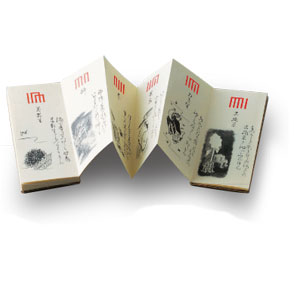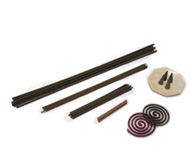
The political stabilization and economic growth in the Edo period enabled high quality incense materials to be used widely in general public by the time of the Genroku era. Accordingly, Kodo spread not only among samurai but also among wealthy merchants. It was one of the essential accomplishments for the upper class and many of the learners were men.
With the popularization of Kodo, kumiko in particular flourished during this period. Kumiko is a game where participants listen to incenses and compare and identify them, and various types of visually pleasing kumiko with timely themes were invented, including Tanabatako, Genjiko and Keibako.

Incense sticks began to be distributed in mid-16th century, but at that time they were imported from China. Domestic production of incense sticks started around the end of 17th century to early 18th century. Its recipe remains basically the same until now.
Incense sticks were widely spread among commoners and were used as a substitute of a clock at that time as well. They remain the most familiar incense product for us today, used widely in various occasions from religious ceremonies to household.
Copyright © 2008 Yamada-Matsu Co., Ltd.
| Site Map | Privacy Policy |